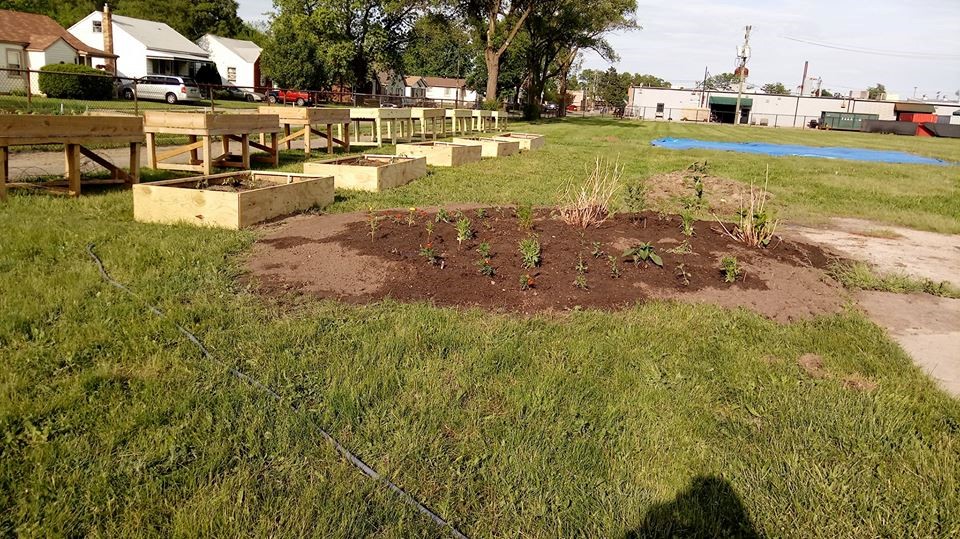Starting a raised bed garden
An alternative to growing plants directly in the ground with boutique soil and better drainage.

What are the benefits of a raised bed garden?
A disappointing soil test result showing alkaline soils? Vegetables that don’t grow well year after year? If soil health is the cause of plant woes in your garden, a framed raised bed garden is one solution to improve growing conditions. For the many southeast Michigan residents who reside on clay soils with moderate to poor drainage, a raised bed garden will provide greater control at growing plants that would otherwise struggle in the ground. Raised bed gardens at least 2 feet in height also provide an accessible option for individuals whose physical limitations prevent them from leaning or working at ground level.
Construction
Garden dimensions can be adapted to the gardener’s needs. The larger the dimensions of the raised bed, the more soil that will be required. Select wood or another material that is long-lasting. Pressure treated woods with arsenic were phased out over a decade ago, and newer products typically contain less toxic preservatives such as ACQ (alkaline copper quaternary). While these contain copper, the levels are too low to leach into the soil and have adverse effects on children or adults, according to research from Cushing et al. 2007.
Though more expensive, materials including black locust and cedar are an alternative to pressure treated wood and will last for multiple years. Other materials, including concrete landscaping stones (Photo 1) or barrels, also make suitable substrates for raised bed gardens.
Framed raised beds can be constructed at the ground level or elevated on support beams (Photo 2). Elevated beds must be able to support the weight of soil, and this may require stakes on the exterior of garden frames. If building multiple raised beds, it is critical to leave enough space between the beds to allow passage for garden equipment such as wheelbarrows.
Avoid making beds wider than 3.5 to 4 feet, or it may be difficult to access the middle of the bed from either side. Raised beds can be further customized for season extension through adding PVC frames along the edges, to which supported row covers can be added.

Starting the soil
Selecting a soil mix high in organic matter and with good water holding capacity will support a variety of plants. When purchasing a soil mix, inspect the materials that compose the mix. For most raised beds, a blend of half compost and half topsoil can be used to fill the bed. Mixing the topsoil with the amended soil will prevent layering that limits water penetration and root growth. Avoid a strictly topsoil composition since its composition can be varied as there is no legal definition for topsoil. The compost will provide organic matter. Since it decomposes naturally, compost should be added to the soil at the end of each season.
A soil depth of no less than 10 inches is the minimum amount suitable for growing most vegetables other than potatoes and larger vine crops such as watermelon. Fertilize appropriately soon after planting to provide the right nutrients for vegetables. Michigan State University Extension provides recommendations for applying fertilizer that is most suitable to your gardening needs. Testing the soil shortly after planting is a method to confirm you have amended the soil with an appropriate amount of organic matter and to a pH of between 6.0 and 7.0.
Drainage
Raised beds will lose water more rapidly than plants sowed directly in the ground. For raised beds built above the ground, drill drainage holes through the base. In the summer, water plants regularly with 1 inch of water per week. To avoid having to carry a watering can to the garden, the raised bed should be within length of a water source. As an alternative to watering with a sprinkler, a drip irrigation system can be set up prior to planting.
Weeds
When planting on the ground, adding a landscape fabric layer below your raised bed will prevent weed emergence. If using an impermeable fabric, adding a few holes within the fabric will prevent soils from remaining waterlogged. Don’t get complacent about weeds, as seeds that arrive passively through wind or animal dispersal could later germinate. Tilling plant residues into the soil or adding a cover crop such as annual ryegrass or oats will add nitrogen and suppress weeds.
Placing straw, woodchips or mulch at the soil level, once plants have germinated, or between raised beds (Photo 3) will further suppress weeds and maintain a clean path with minimal mud.

Is a raised bed garden only for vegetables?
A raised bed garden can accommodate more than vegetables. Perennial flowers can also thrive in raised beds, though soil depths of greater than 1 foot are preferred. If growing blueberries in raised beds, there are several unique considerations. Your soil pH must range from 4.5 to 5.5, and about 30% of the soil mix should be peat moss, with mulch on the top to maintain an acidic environment. An annual application of acid-forming fertilizers, such as ammonium sulfate, will support a low pH. Amending the soil with compost from your yard debris is not recommended, since it may contain material with a high pH.
Growing plants in raised beds gives gardeners the advantage of controlling soil characteristics. This style of gardening works well in compact spaces with full to partial sun. If a raised bed won’t fit in your space, MSU Extension also has resources for growing vegetables in containers.



 Print
Print Email
Email




